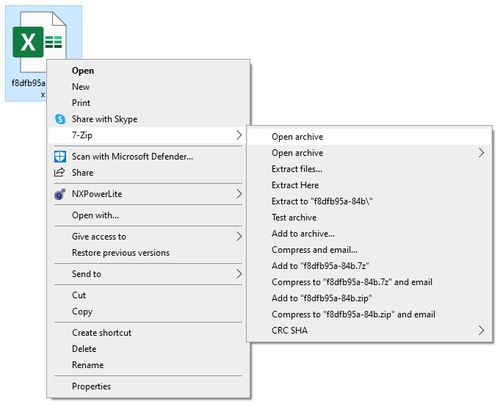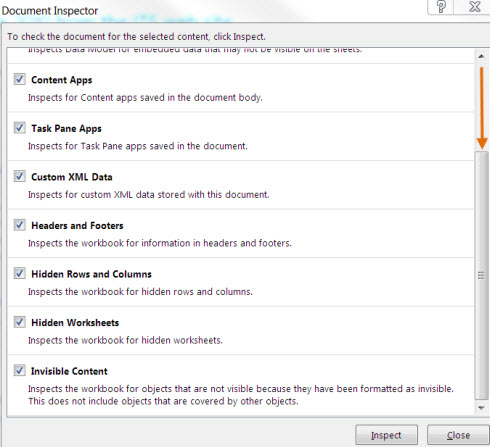The Best Guide To Excel Links Not Working
Excel Links Not Working for Dummies
Table of ContentsRumored Buzz on Excel Links Not WorkingThe 9-Minute Rule for Excel Links Not WorkingThe Of Excel Links Not WorkingExcel Links Not Working Things To Know Before You BuyExcel Links Not Working for Dummies

Selection computation features like either can not deal with entire column recommendations or determine all the cells in the column. User-defined features don't immediately acknowledge the last-used row in the column and, as a result, regularly compute whole column references inefficiently. However, it is easy to program user-defined features to make sure that they identify the last-used row (excel links not working).

6 Easy Facts About Excel Links Not Working Explained
Utilizing the formula for a dynamic variety is usually more effective to the formula because has the drawback of being an unpredictable feature that will be determined at every recalculation. Efficiency lowers because the function inside the vibrant variety formula must examine lots of rows. You can minimize this performance decrease by saving the component of the formula in a different cell or defined name, and then referring to the cell or name in the vibrant array: Counts!z1=COUNTA(Sheet1!$A:$A) Offset, Dynamic, Array=OFFSET(Sheet1!$A$ 1,0,0, Counts!$Z$ 1,1) Index, Dynamic, Range=Sheet1!$A$ 1: INDEX(Sheet1!$A:$A, Counts!$Z$ 1+ROW(Sheet1!$A$ 1) - 1,1) You can also utilize functions such as to build vibrant arrays, yet is unpredictable and always calculates single-threaded.
Utilizing several dynamic ranges within a single column needs special-purpose counting functions. Utilizing numerous dynamic ranges can decrease performance. In Workplace 365 variation 1809 as well as later, Excel's VLOOKUP, HLOOKUP, and suit for exact suit on unsorted information is much faster than ever when seeking out numerous columns (or rows with HLOOKUP) from the exact same table variety.
Luckily, there are numerous ways of boosting lookup computation time - excel links not working. If you use the specific match alternative, the estimation time for the function is symmetrical to the variety of cells scanned prior to a match is located. For lookups over huge arrays, this moment can be considerable. Lookup time utilizing the approximate match choices of,, as well as on sorted data is fast and is not considerably increased by the size of the range you are seeking out.
Excel Links Not Working for Dummies
Make certain that you recognize the match-type and go to this website range-lookup choices in,, and also. The following code instance shows the syntax for the function. MATCH(lookup value, lookup variety, matchtype) returns the largest suit less than or equivalent to the lookup worth when the lookup array is arranged ascending (approximate suit).
The default choice is approximate match arranged rising. The adhering to code instance reveals the phrase structure for the and also features.
VLOOKUP(lookup value, table variety, col index num, range-lookup) HLOOKUP(lookup worth, table range, row index num, range-lookup) returns the biggest suit less than or equal to the lookup worth (approximate match). Table variety must be arranged rising.
The 6-Minute Rule for Excel Links Not Working
If your data is arranged, but you desire a specific suit, see Use two lookups for sorted information with missing values. Attempt using the as well as functions rather than. Although is a little much faster (roughly 5 percent much faster), less complex, and also utilizes much less memory than a mix of and, or, the added adaptability that and also deal often allows you to dramatically conserve time.
The feature is fast as well as is a non-volatile feature, which speeds up recalculation. The function is likewise quick; however, it is an unstable feature, and it in some cases dramatically increases the time taken to refine the estimation chain.$A$ 2:$F$ 1000, MATCH(A1,$A$ 1:$A$ 1000,0),3) Because precise suit lookups can be slow-moving, think about the adhering to choices for boosting performance: Utilize one worksheet.
When you can, the data initially (is fast), and also utilize approximate suit. When you should use an exact suit lookup, restrict the array of cells to be checked to a minimum. Usage tables as well as structured recommendations or vibrant array names as opposed to referring to a lot of rows or columns.
Some Of Excel Links Not Working
2 approximate suits are considerably faster than one exact match for a lookup over greater than a couple of look what i found rows. (The breakeven factor has to do with 10-20 rows.) If you can sort your information but still can not make use of approximate suit because you can not make sure that the value you are searching for exists in the lookup array, you can use this formula: IF(VLOOKUP(lookup_val, lookup_array,1, True)=lookup_val, _ VLOOKUP(lookup_val, lookup_array, column, True), "notexist") The initial component of the formula works by doing an approximate lookup on the lookup column itself.
VLOOKUP(lookup_val, lookup_array, additional reading column, True) If the response from the lookup column did not match the lookup worth, you have an absent value, and the formula returns "notexist". Know that if you look up a value smaller sized than the smallest worth in the checklist, you get a mistake. You can manage this error by utilizing, or by adding a tiny test value to the list.
Beginning with Excel 2007, you can utilize the function, which is both straightforward and rapid. IF IFERROR(VLOOKUP(lookupval, table, 2 FALSE),0) In earlier versions, a straightforward however slow method is to utilize a function that has two lookups. IF(ISNA(VLOOKUP(lookupval, table,2, FALSE)),0, _ VLOOKUP(lookupval, table,2, FALSE)) You can prevent the double precise lookup if you use exact once, store the lead to a cell, and after that check the outcome before doing an.